A little background may be in order. Start with the fact that a 1928 000-28 is likely my favorite vintage guitar of all time… and that I’m clearly intrigued by what Martin’s specialists in the Repair department can create when coupling old growth Brazilian rosewood with “Authentic” build techniques. Perhaps that explains why this will be my fourth “conversion” with Martin, each more exacting than the last.
This project started when I spotted a beautiful set of BRW (yes, I know about the dead straight-grained look—but perfectly quartered with figure is my weakness) on a very early 1964 000-28C which turned up at George Gruhn’s shop.
Having not converted a 12-fretter with Martin, I thought a late ‘20s style 000-28 utilizing this BRW would be a great final (yeah, right) project. But then I started thinking (always dangerous) about how well-received Martin’s newest “Authentic”—a D-45—had been. Every report indicated that Martin had gotten it scary close to completely right, from the smallest construction details like perfect old style pearl and top thickness, to a knockout sound.
Between detailed measurements taken from the Jimmy Rodgers 000-45 and invaluable input from TJ Thompson, Willi Henkes, John Arnold and Dave Eichelbaum, all the particulars were available. However, I also knew that Martin had heretofore not done 45-style conversions for customers. But it never hurts to ask… and they said OK!
The guitar boasts hide glue throughout, a hand carved ebony rod neck, real shell everywhere, exacting dimensions for top thickness, bracing and binding inlay. The the wonderfully figured, perfectly quartered old growth Brazilian back and sides are paired with a stiff, silky red spruce top. If there ever was a true Authentic, this is it. And the sound? In this guitar, I hear the both hollow, woody resonance of the late ‘20s 12-fret Martins and the clear, clean trebles of a mid-‘40s tapered brace guitar.
Let’s just say I like it a lot—and it’s only going to get better.
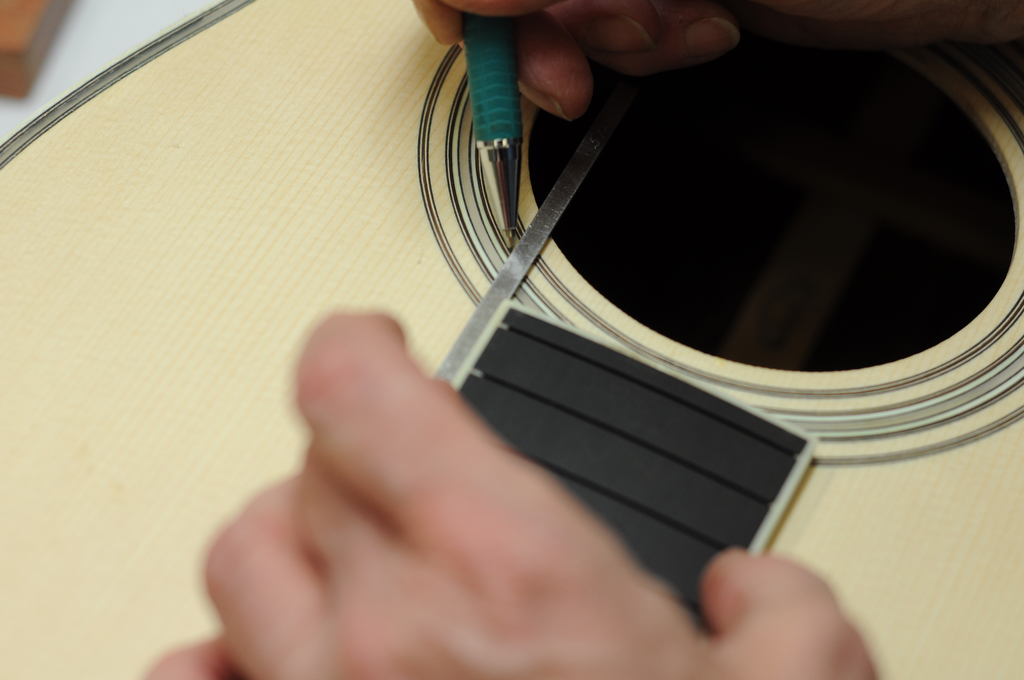
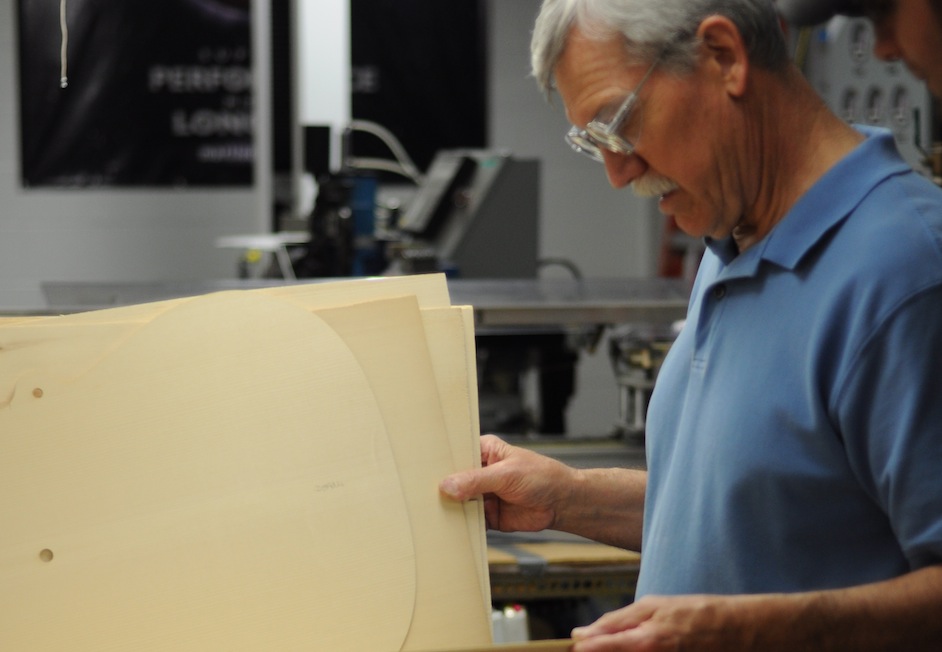
Milt Hess, Jr. begins the search for a premium Adirondack top out of the small stack used for the D-45-1942s.
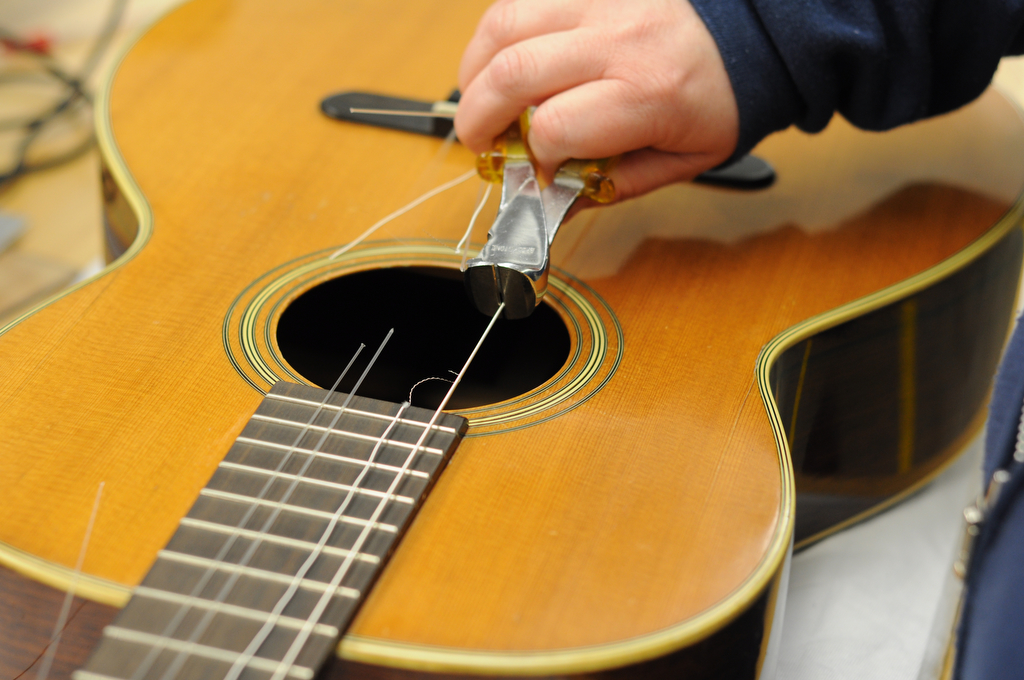
Disassembly begins by cutting the nylon strings.
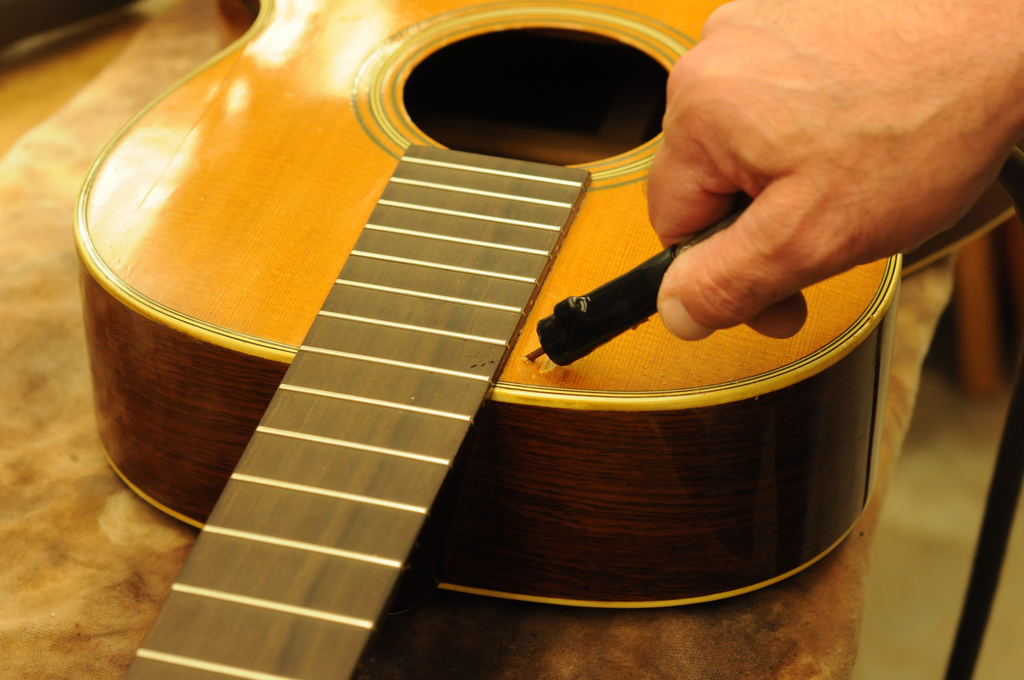
Dan Pacenti starts the neck removal process, trying to be as delicate as possible so not to damage the sides.
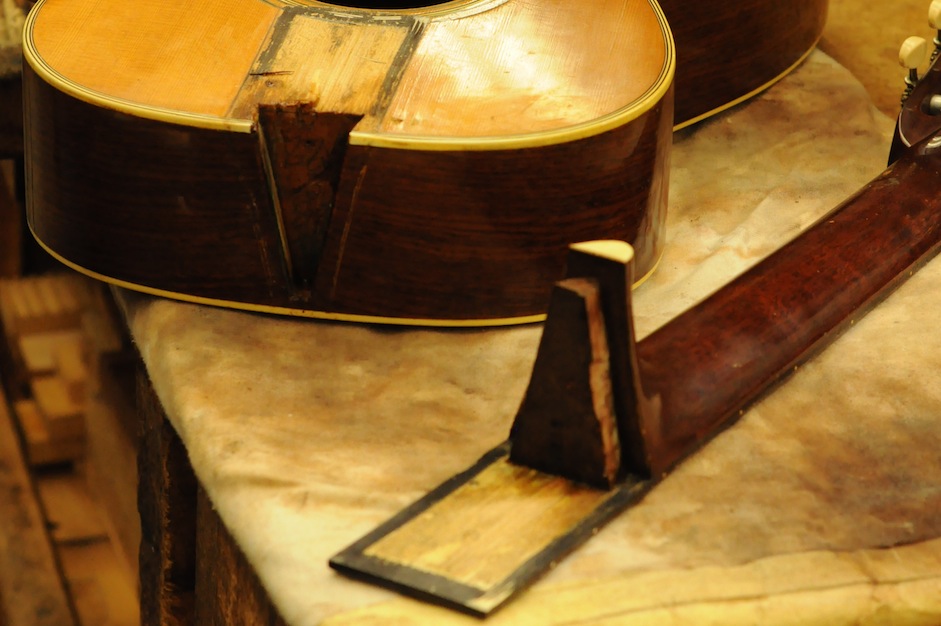
The old neck comes off.
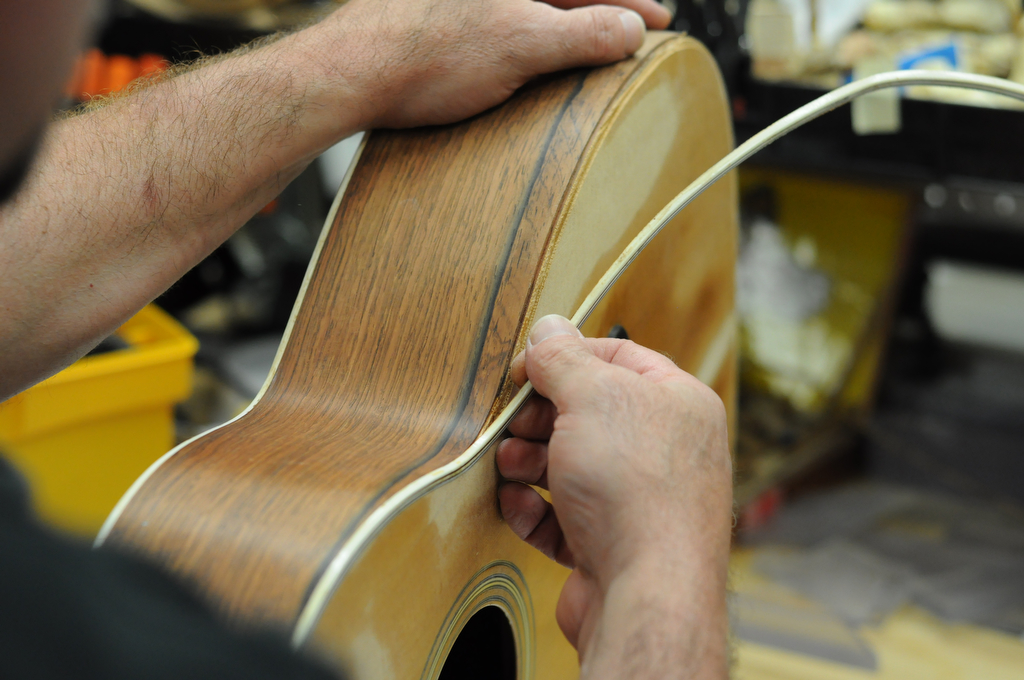
The original binding is removed.
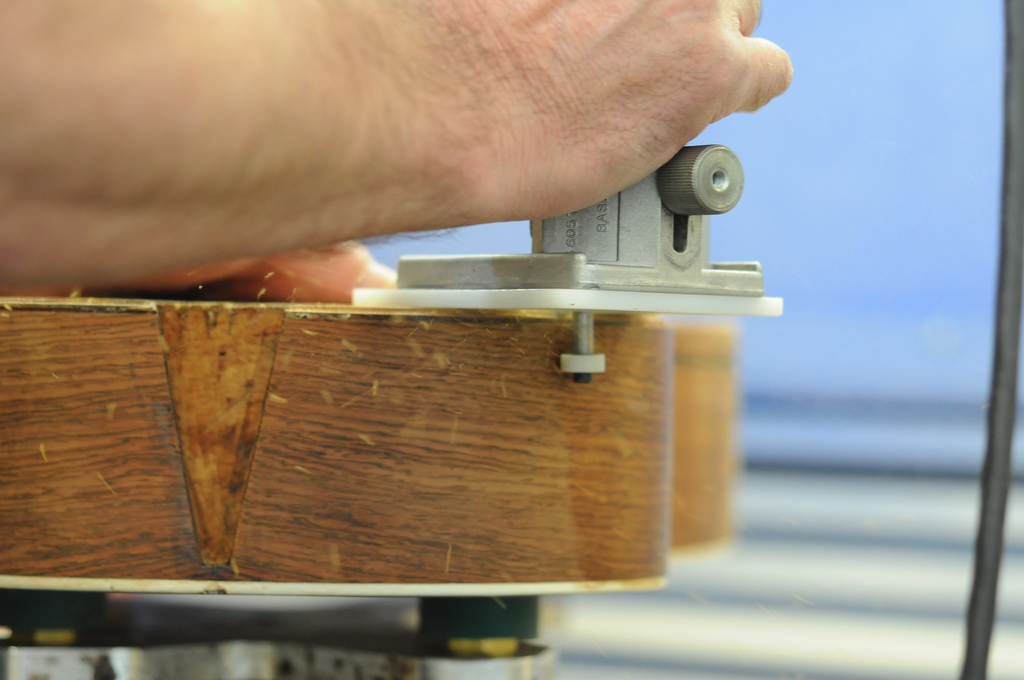
Routing around the edge of the old top.
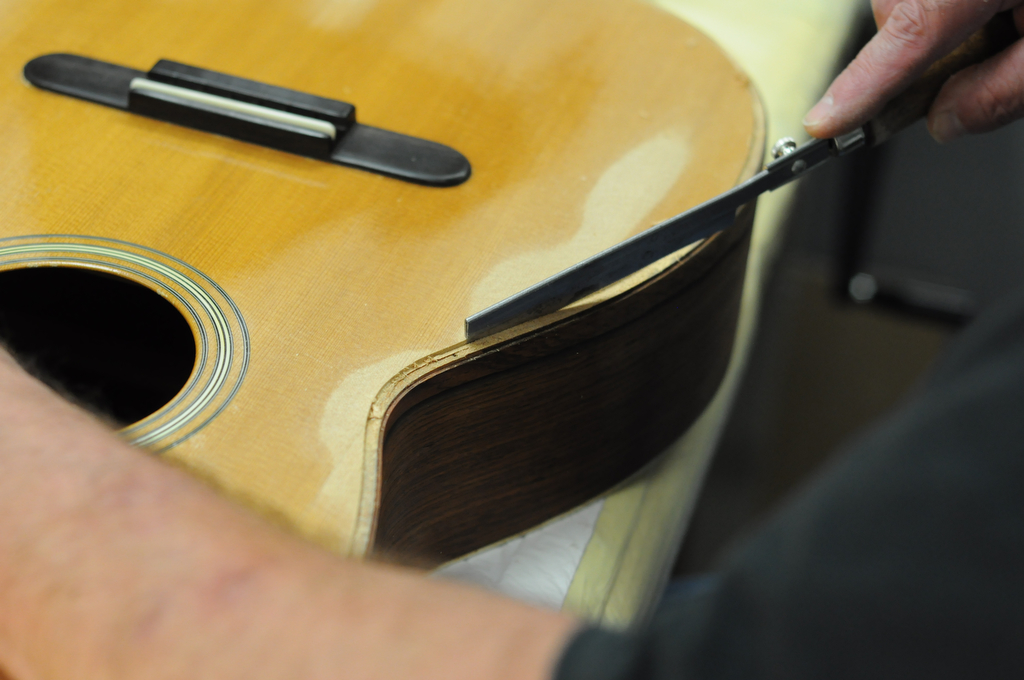
A chisel is now all that is needed to delicately separate the top.
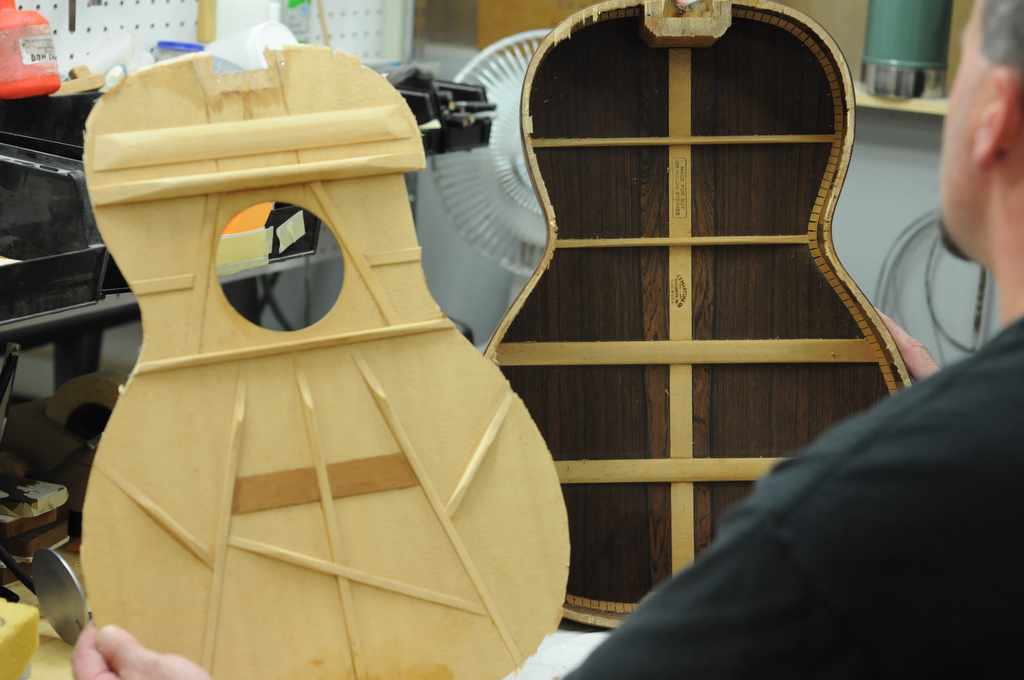
A view of the ‘classical’ bracing on the old top and the interior bracing of the back.
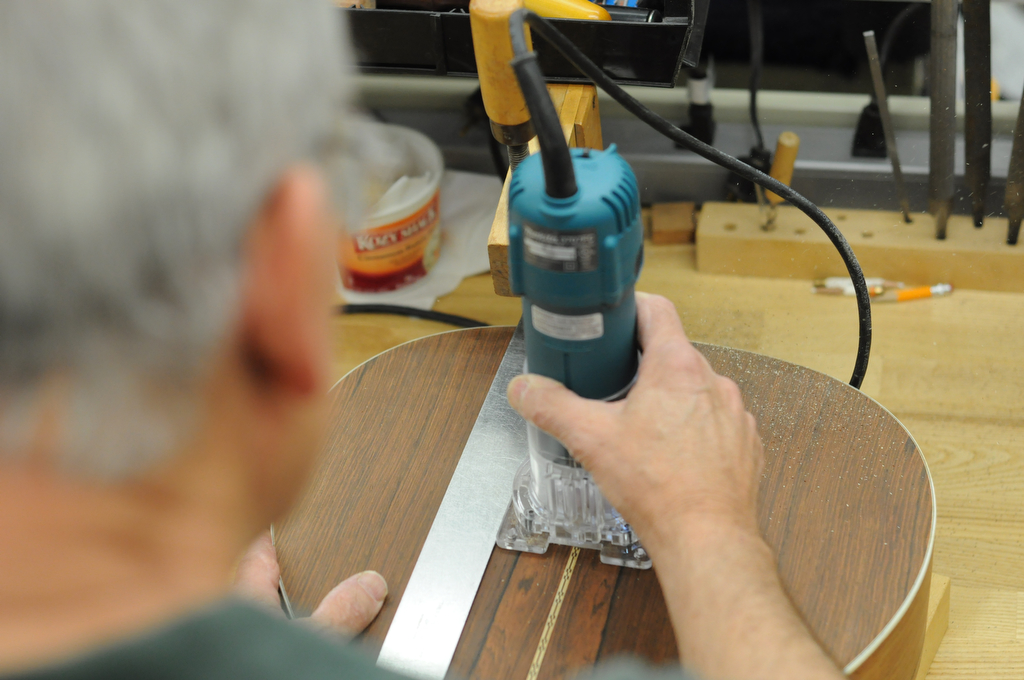
Routing out the old ‘chainlink’ backstrip to make way for its style 45 replacement.
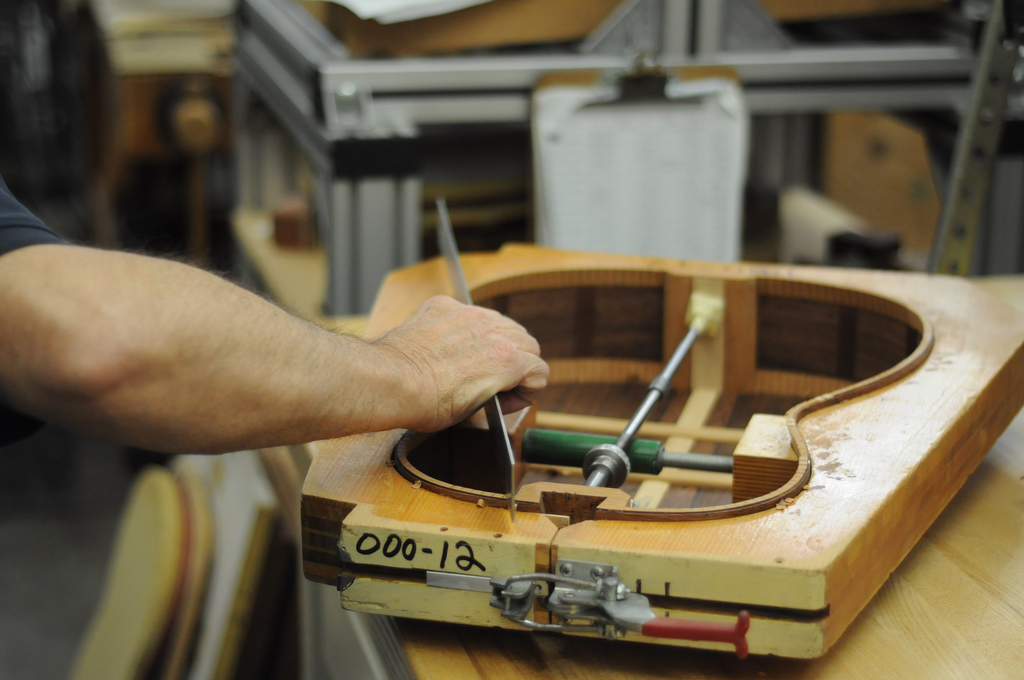
The back and sides are fit into a form
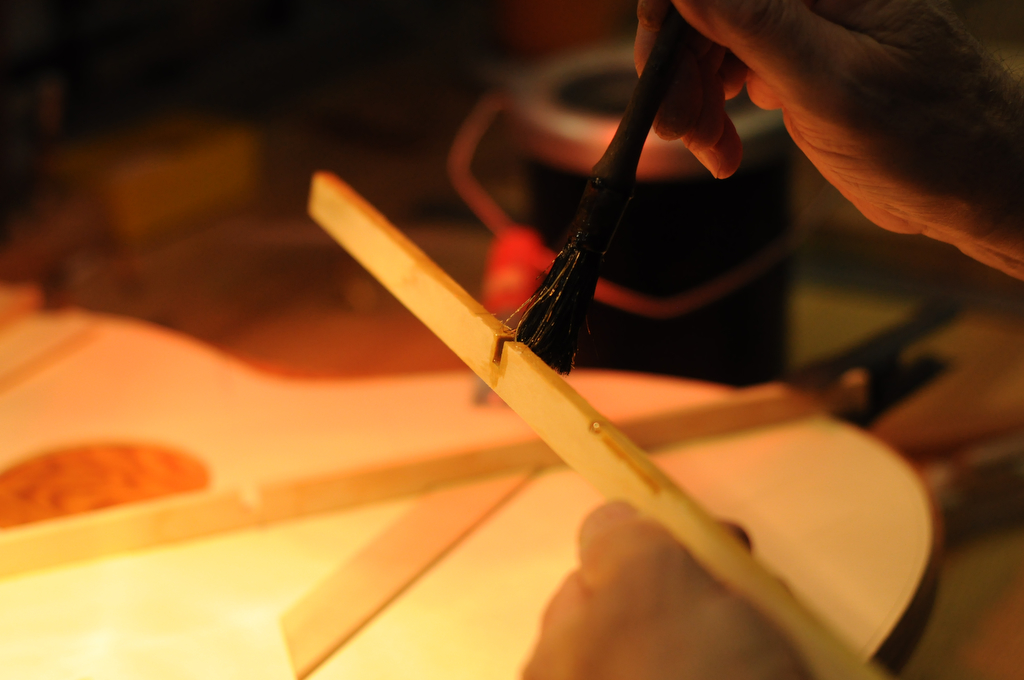
Prepping the x-brace with hide glue.
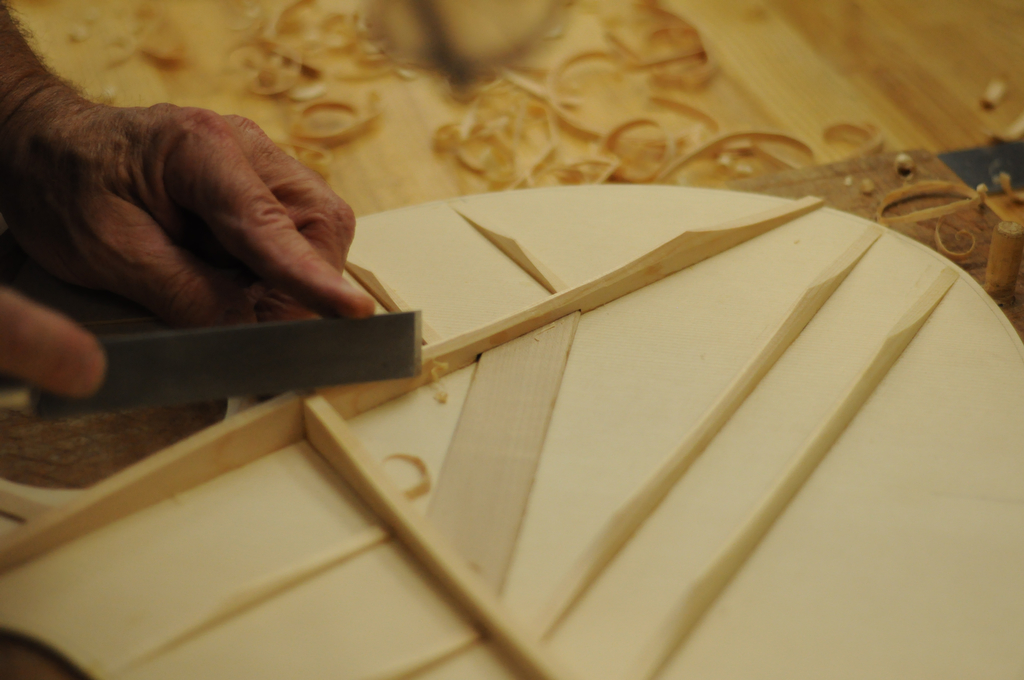
Milt Hess scallops the Sitka spruce bracing on the red (Adirondack) spruce top.
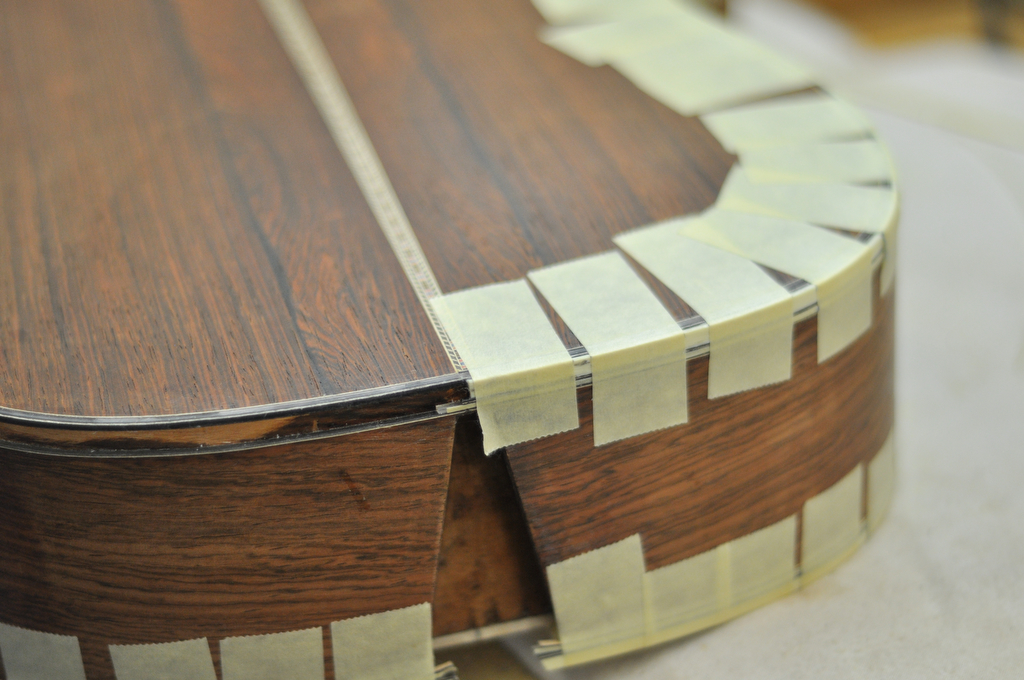
Here the new binding is meticulously taped in place.
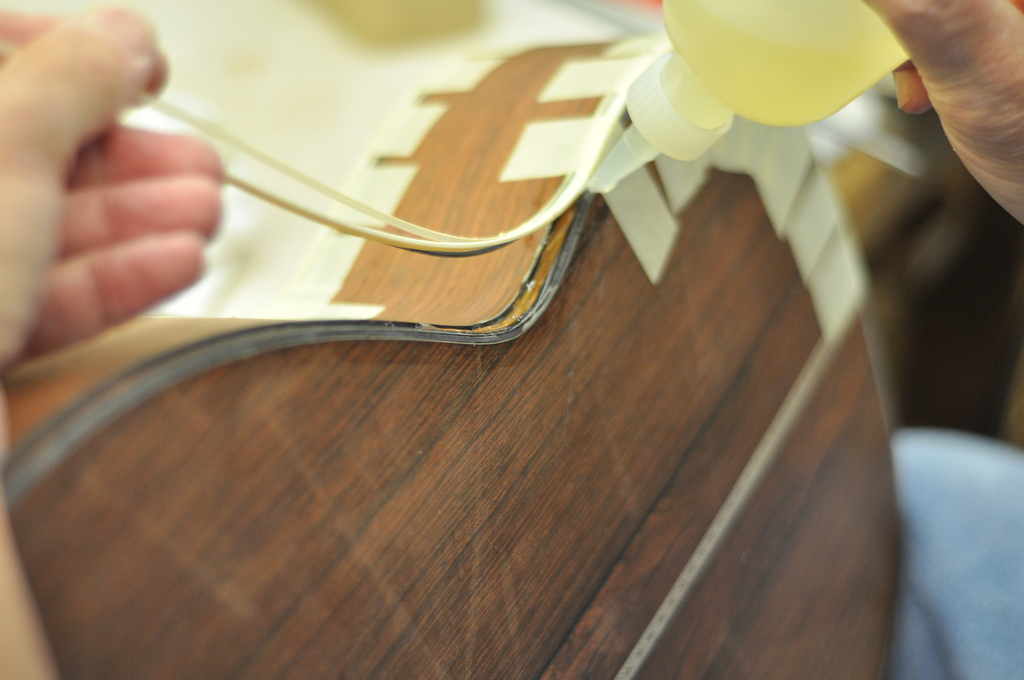
An additional shot from the binding process which includes gluing a strip of properly sized ‘poly’ or teflon sandwiched in with the binding. The glue doesn’t adhere to the poly, allowing it to be slipped out and replaced by the pearl.
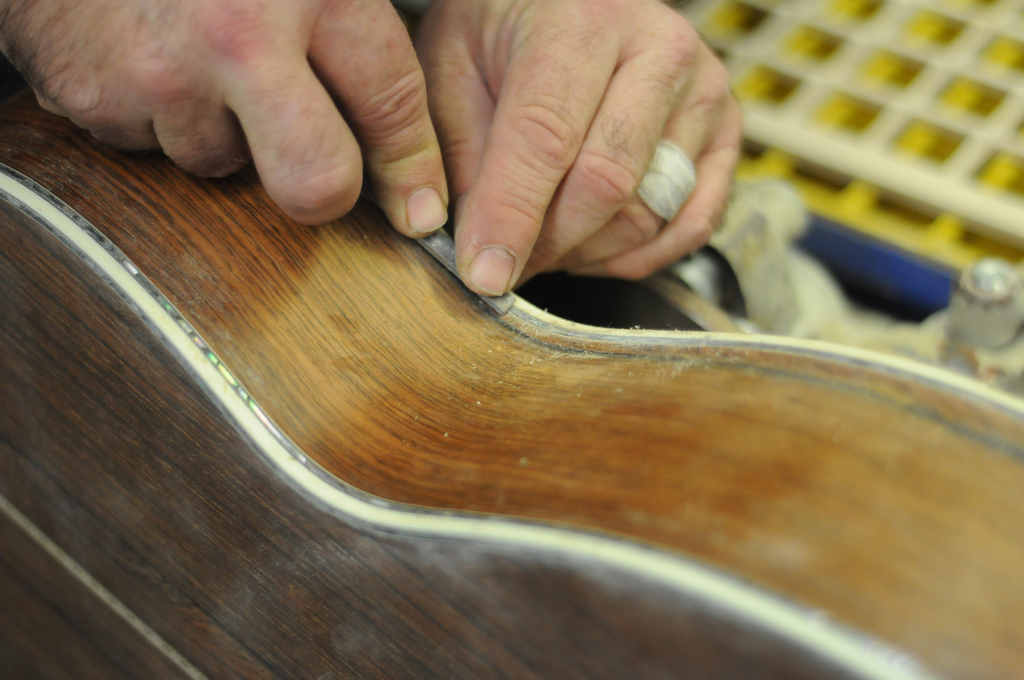
Fred Castnor levels the pearl inlay
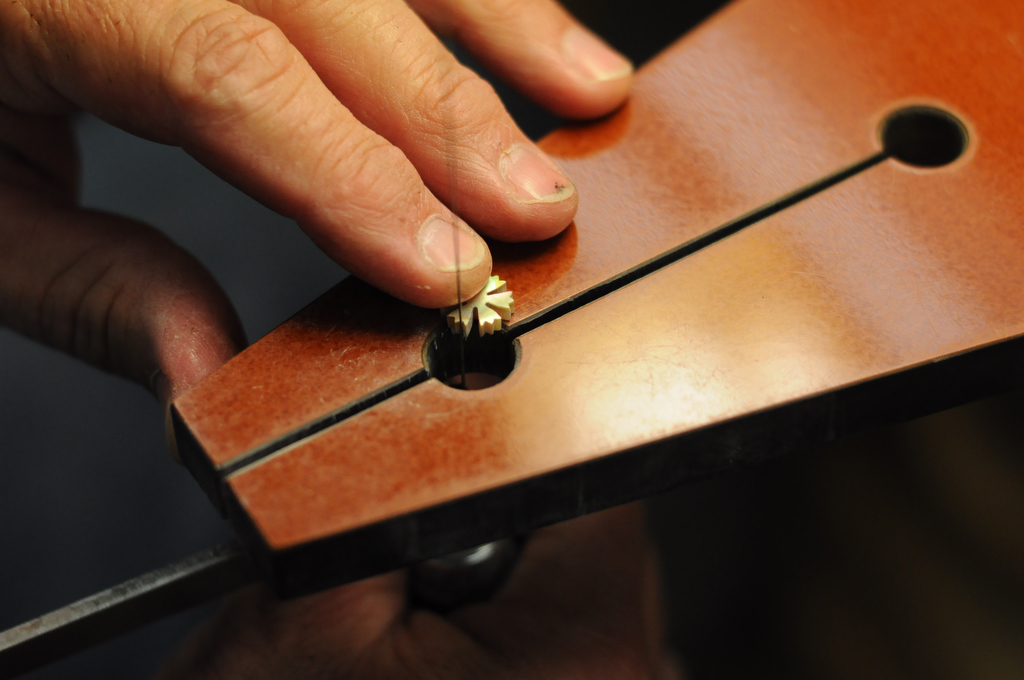
Dale Trach cutting fingerboard inlay pearl.
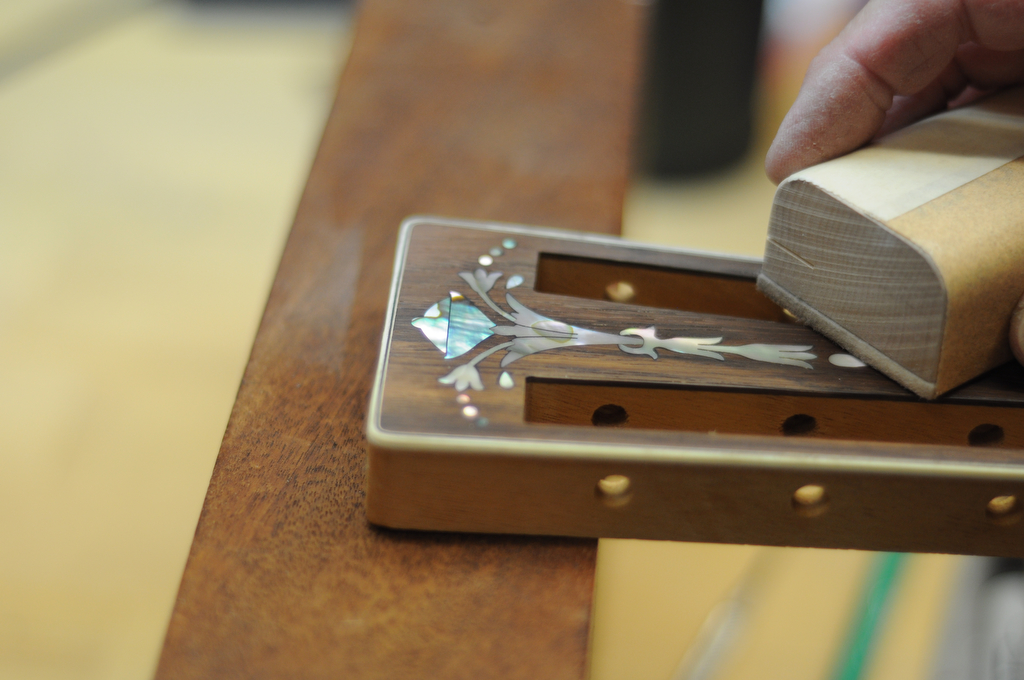
The new headstock torch getting some final touches.

Preparing for the inlay around the fingerboard extension.
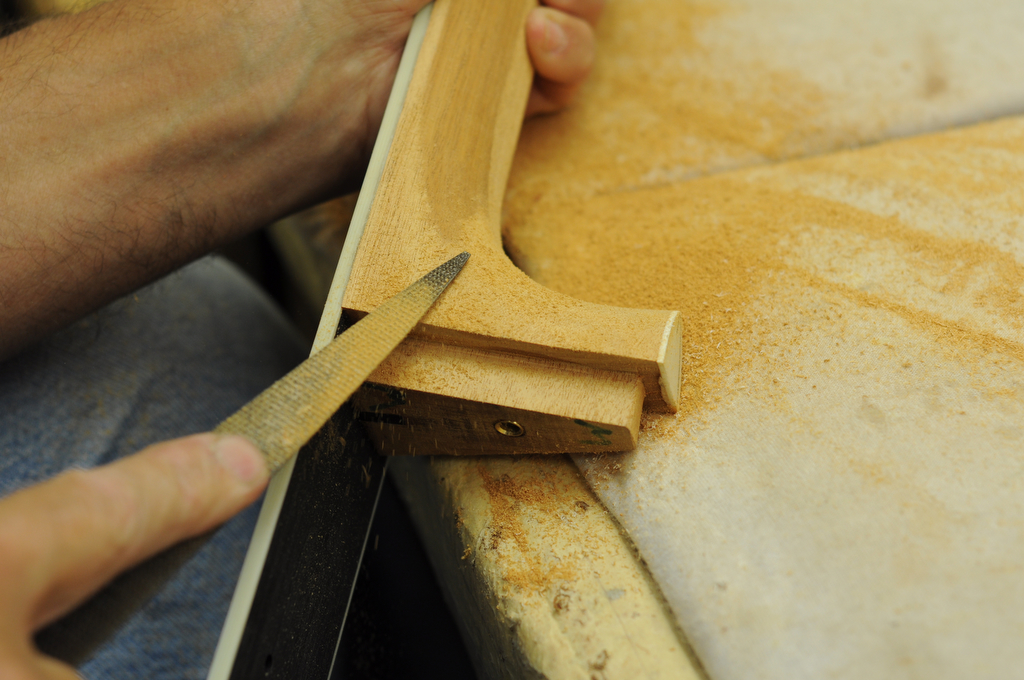
Milt carves the ebony-rod neck. It’ll be old-style–somewhat rounded at the first fret increasing in V-shape as it moves up to the seventh fret and beyond.
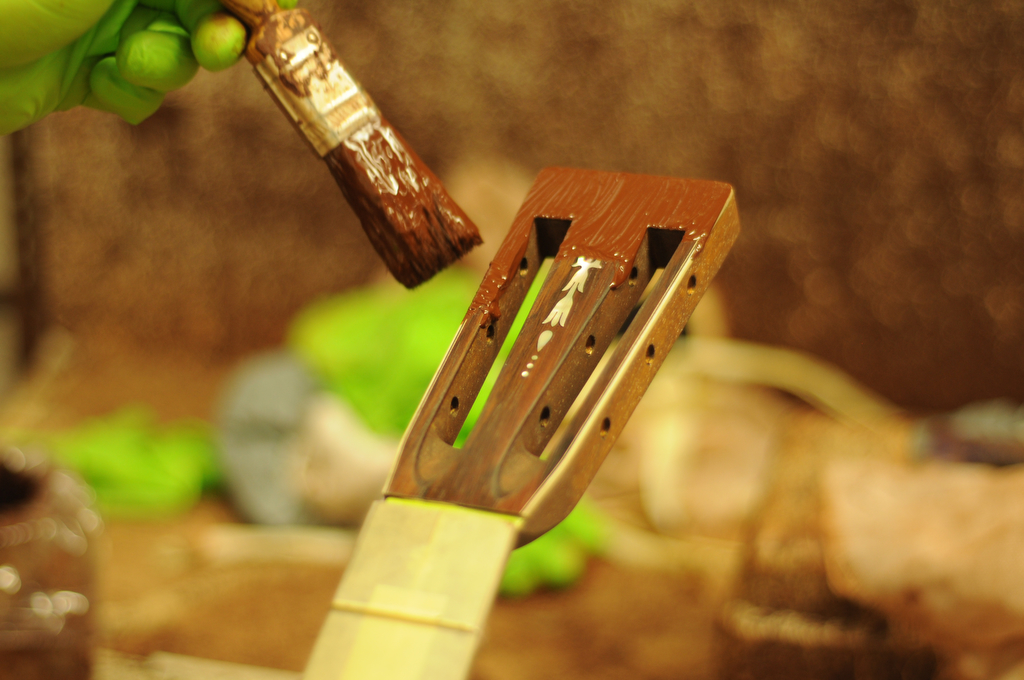
Staining the headstock…
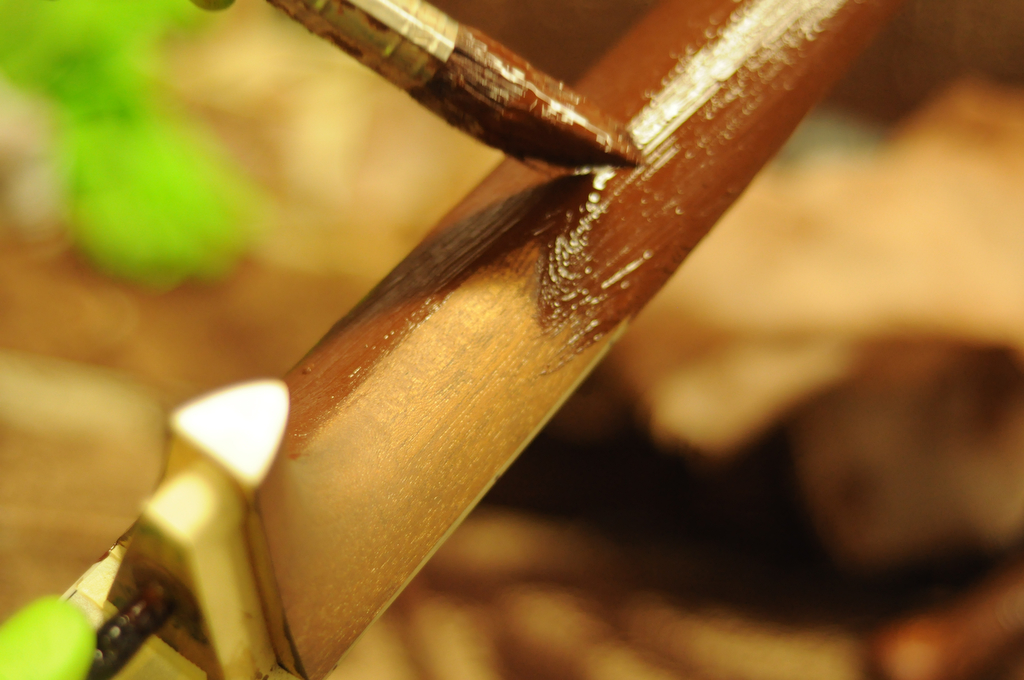
And the neck.
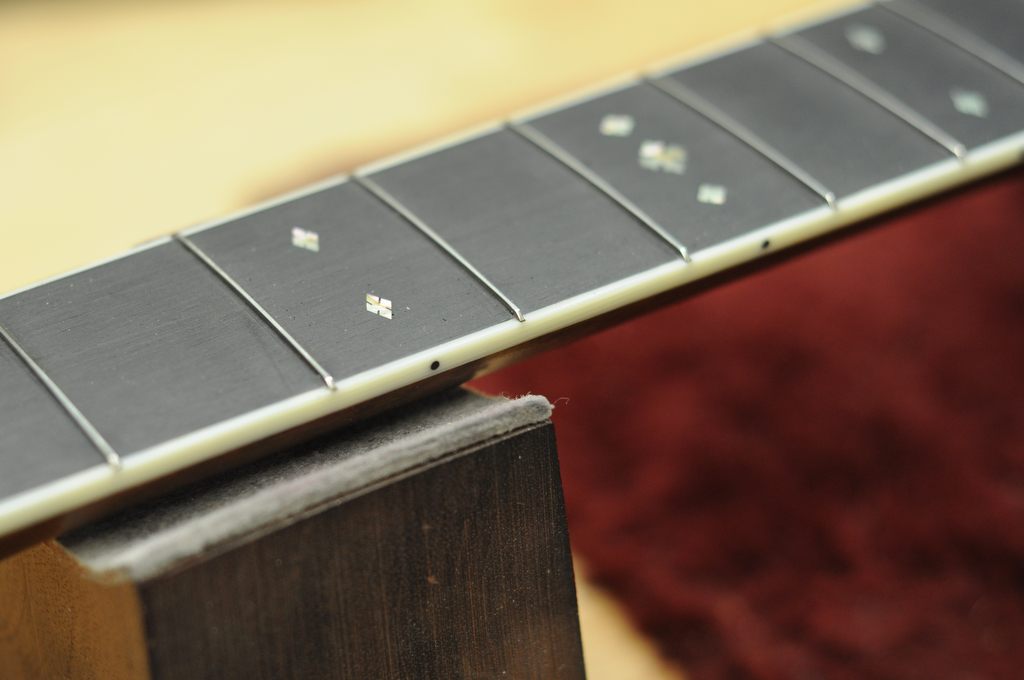
Dave Doll: “We’re hand cutting the fret position markers from solid pearl. Every bit of pearl on the body and rosette are being hand cut from the solid pearl we use for the Authentics. Production is being good enough to let us use some of their stash.” “The torch is authentic from the ’20’s from our old stock. This is gonna be really something special when its done.”
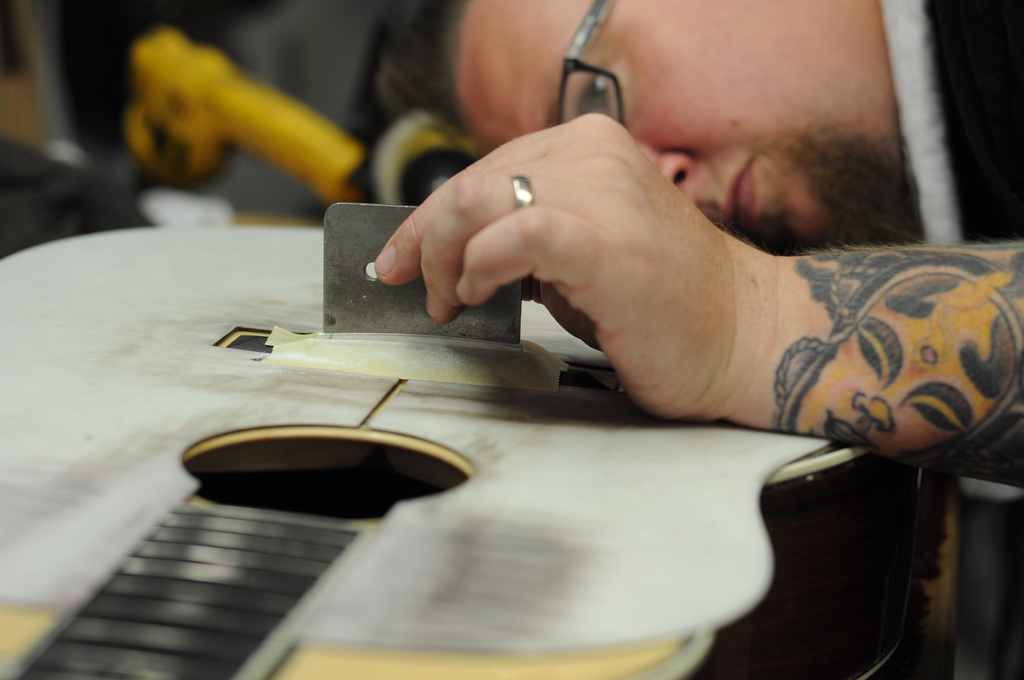
Dave Doll making certain that the saddle radius matches the 12 degree radius of the fingerboard.
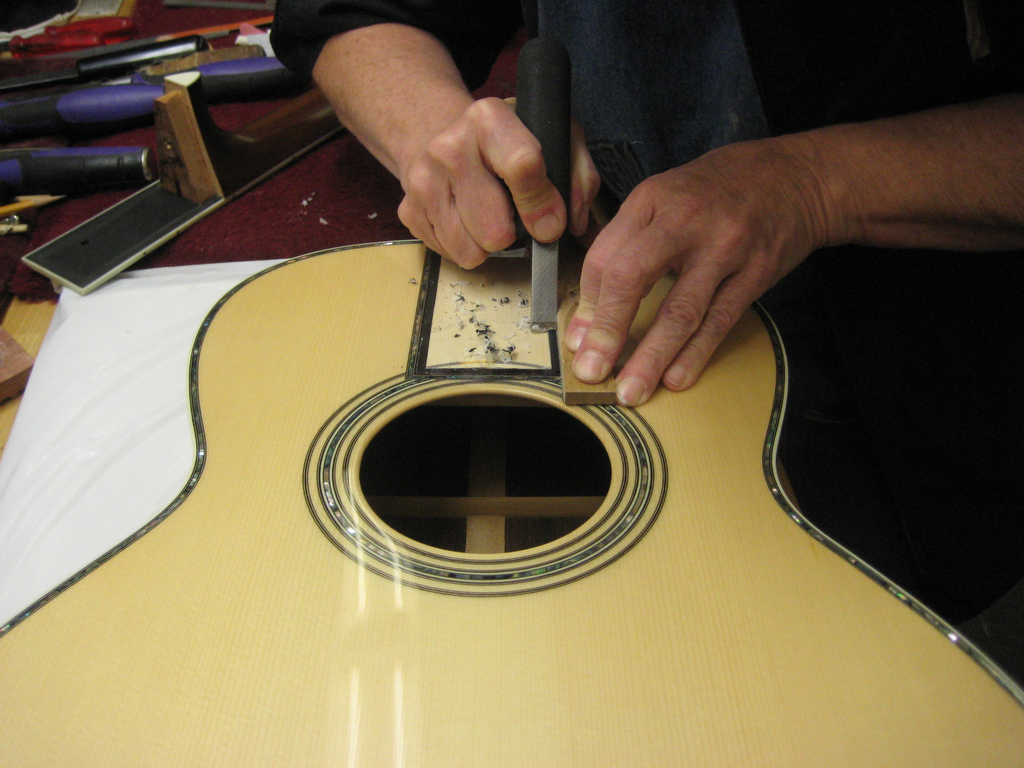
Final prep before the neck is attached.
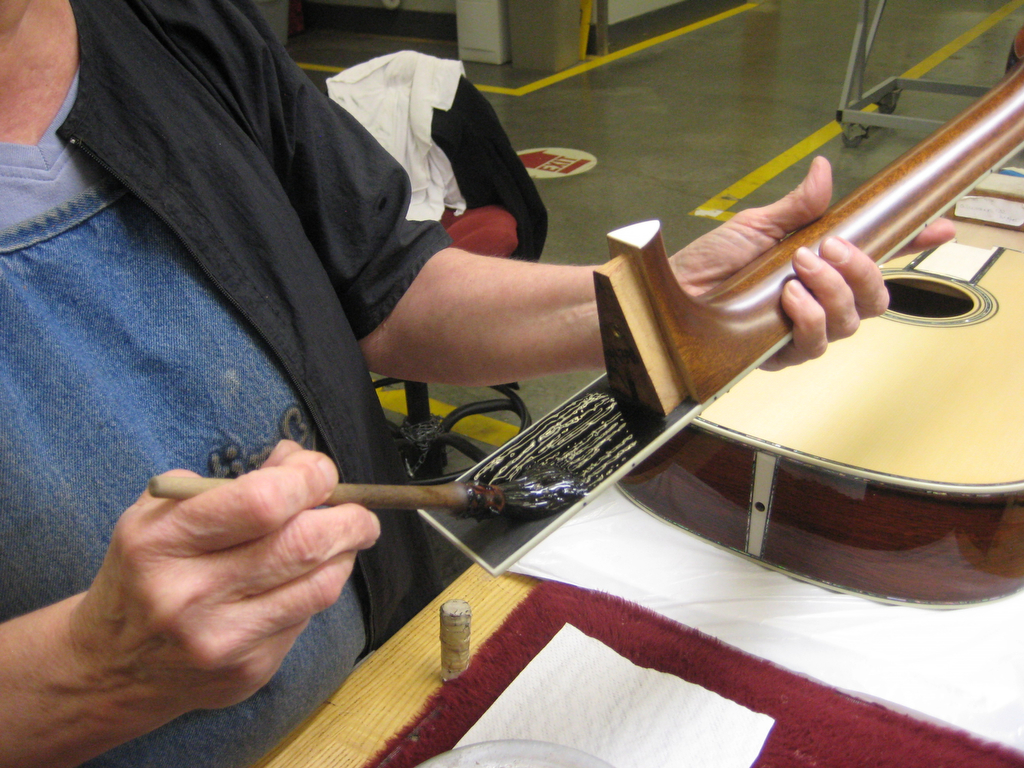
Susan Noviello brushes hide glue on the fingerboard extension.
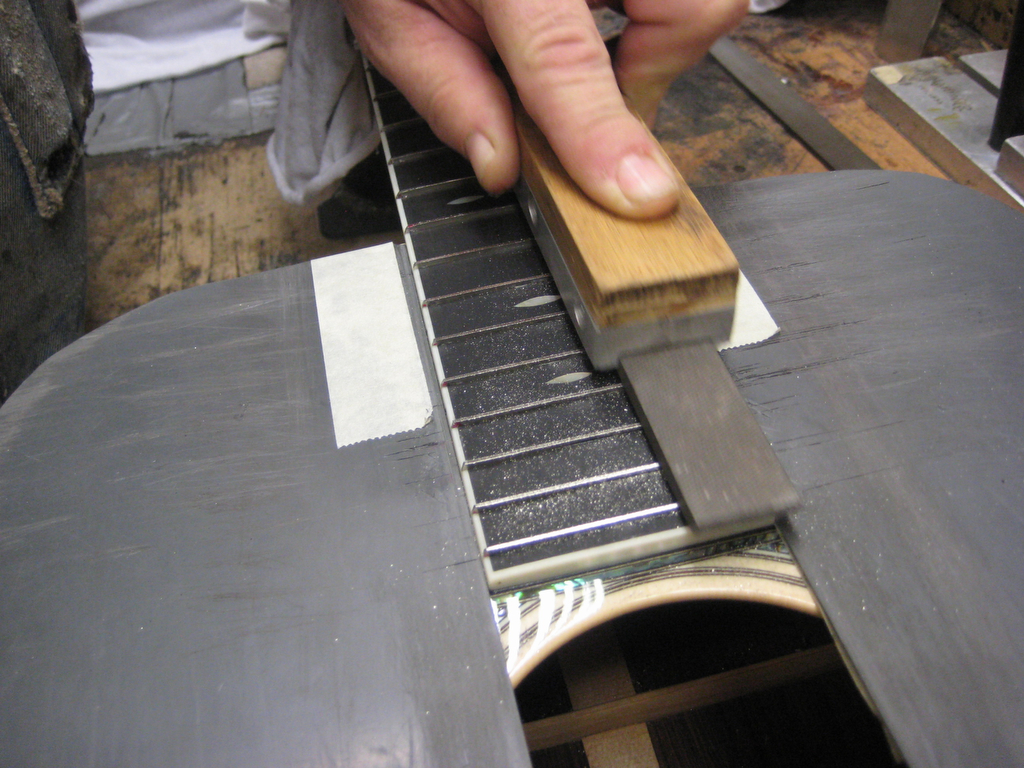
Leveling the bar frets.
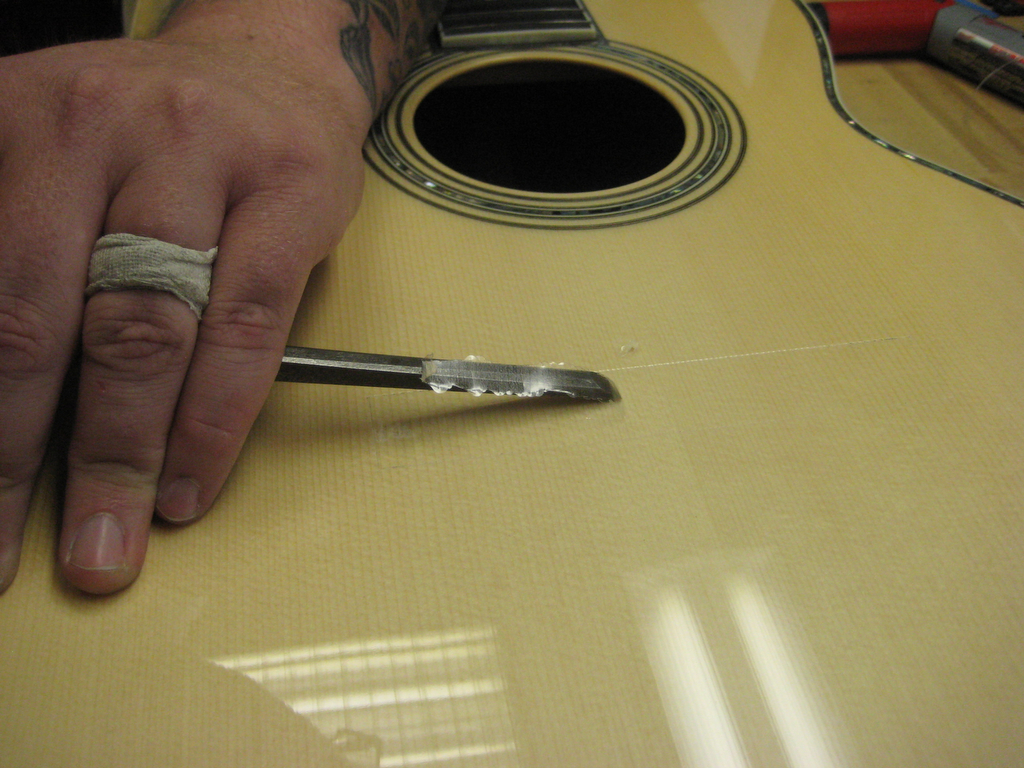
A small rectangle of Dan Shook’s super thin finish is delicately removed before gluing the bridge in place.
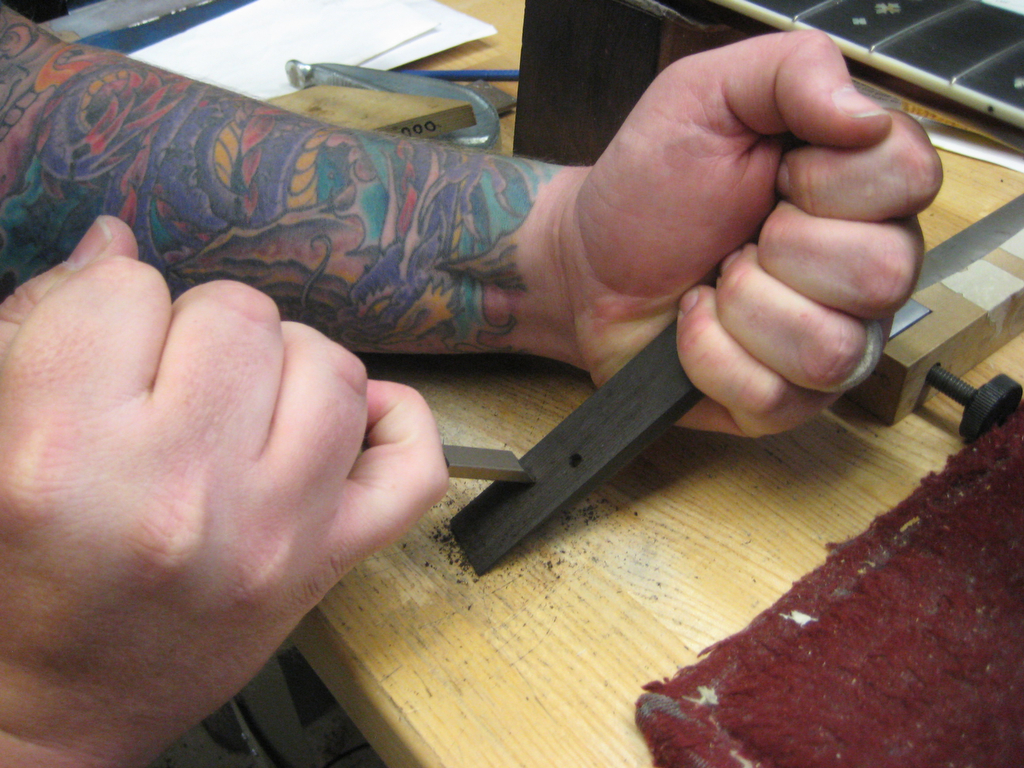
Scoring the underside of the ebony pyramid bridge.
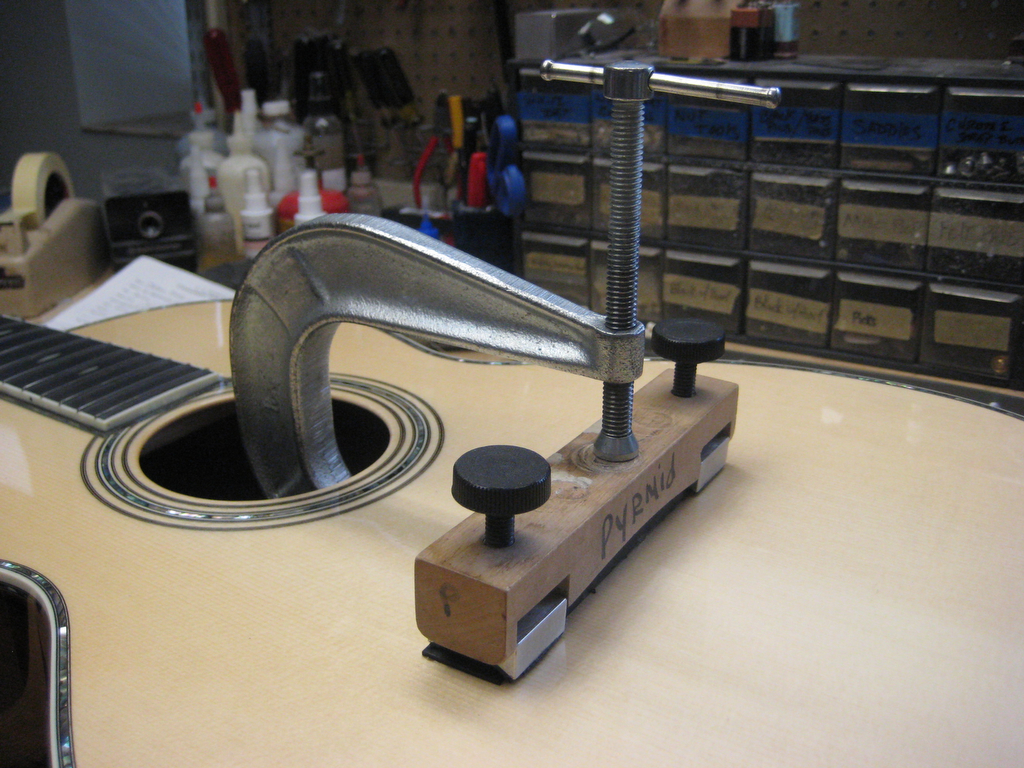
The bridge is glued and clamped down.
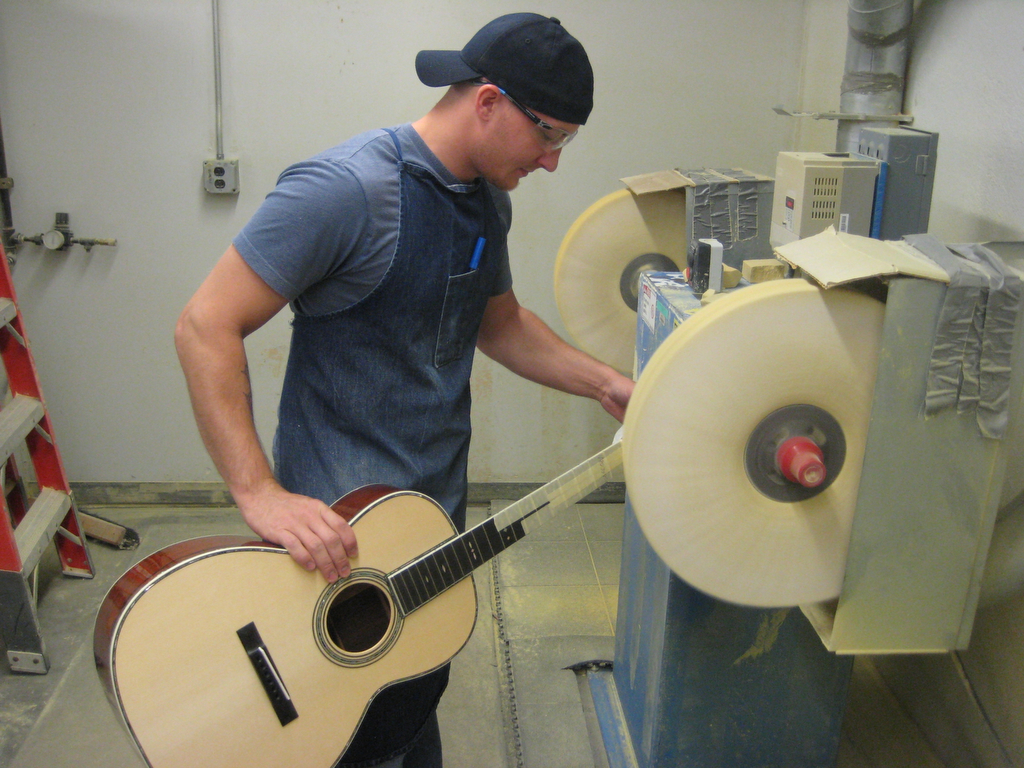
Chris Albert handles the final buffing out of the headstock and body.
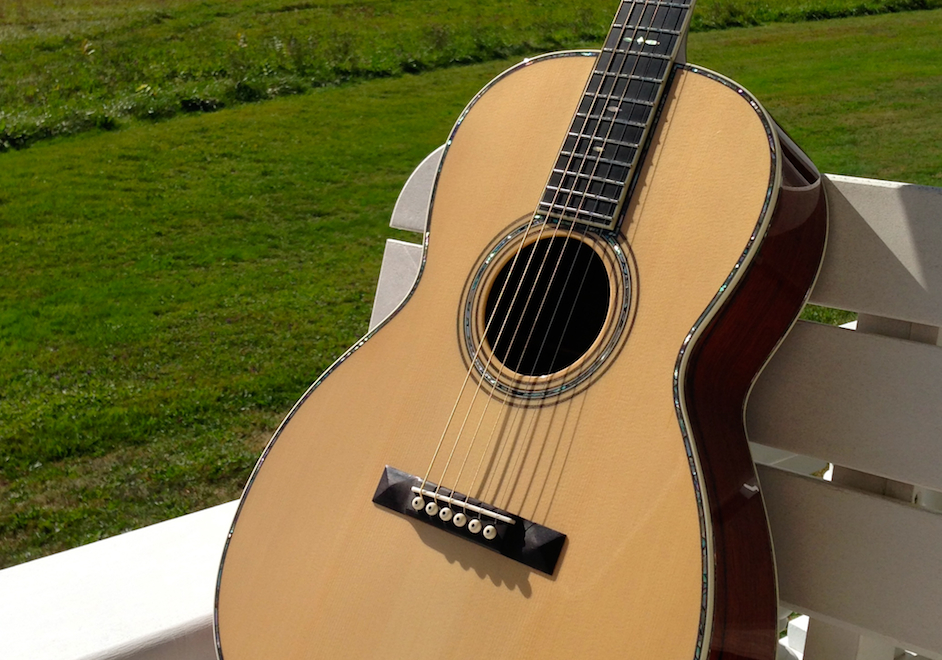
The finished 000-45 in all of its glory.
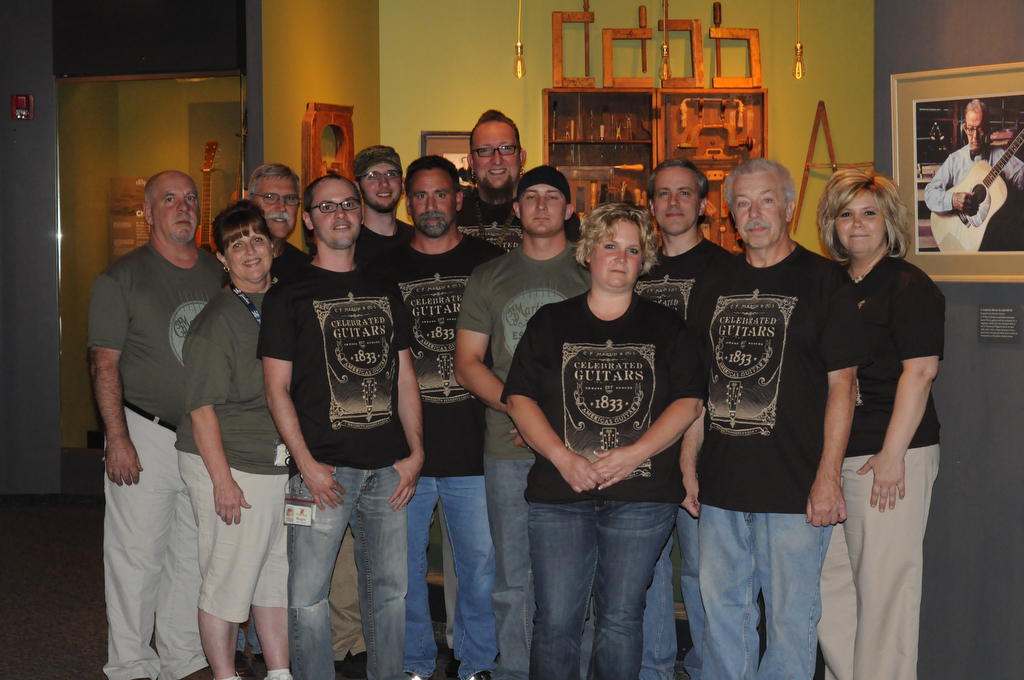
A group shot of the team at Martin who made this guitar a possibility.


